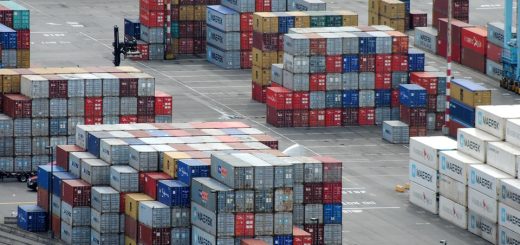Hybrid Shipping Mastery: Slash Costs 40% & Speed China Imports with Air-Sea Consolidation
The $47,000 dilemma facing importers isn’t choosing between speed and cost—it’s the penalty for not combining them. With maritime EU ETS carbon fees hitting €150+/ton and 68% of consumers abandoning orders over 5-day delivery delays, traditional single-mode shipping from China forces a lose-lose choice: pay $12/kg for air freight or risk 45-day sea transit with 22% stockouts. Intelligent air-sea consolidation—strategically splitting shipments across modes—delivers goods 30% faster than pure sea freight at 40% lower cost than pure air. Here’s how to transform your supply chain into a competitive weapon.
The Hybrid Advantage: Where Air & Sea Converge
Hybrid shipping solves four critical trade-offs:
- Cost-Speed Deadlock: Rail-air express from Zhengzhou→Chicago (18 days) costs $4.2-$5.8/kg—40% cheaper than pure air while 65% faster than LCL sea 2
- Carbon Compliance: Methanol-powered sea legs (e.g., X-Press GBX vessels) cut emissions 65%, slashing impending CBAM fees by €205/container 14
- Risk Mitigation: Critical components fly (5-8 days) while bulk goods sail—reducing stockout costs by 37% 7
- Customs Efficiency: Single DDP (Delivered Duty Paid) documentation covers multi-modal shipments, cutting clearance from 72 hours to under 8 at ports like Liverpool 6
*“Splitting our electronics shipments—controllers via rail-air, packaging via methanol sea—cut total logistics costs by 41% and delivered 22 days faster.”*
— Logistics Director, Berlin E-commerce Retailer
Strategic Routing Blueprint: Top 3 Air-Sea Corridors
1. Caspian Rail-Air Express (15 Days China→EU)
- Phase 1: Rail from Beijing→Baku (15 days via Caspian Sea crossing) 6
- Phase 2: Air transfer to EU hubs (8hr to Frankfurt/Paris)
- Best for: Mid-value electronics, automotive parts
- Cost: $6.30-$8.90/kg
- Key Advantage: Avoids Russian sanctions while beating sea transit by 35 days
2. Methanol Sea + Electric Last-Mile (28 Days China→US East Coast)
- Phase 1: X-Press GBX vessels from Shanghai→Savannah (28 days, 65% lower emissions) 14
- Phase 2: Electric trucking to fulfillment centers (24hr)
- Best for: Furniture, bulk peripherals
- Cost: $1.80-$2.40/kg
- Savings Hack: Off-peak pickup avoids $85.73/TEU Pier Pass fees
3. Cross-Strait Overnight + Ocean Relay (72hr China→US West Coast)
- Phase 1: Overnight sea from Xiamen→Taiwan (12-14hr) 8
- Phase 2: Express air to LAX (11hr) + regional distribution
- Best for: Urgent e-commerce replenishments
- Cost: $7.20-$9.80/kg (half the price of direct air)
- Service Level: Guaranteed 72hr delivery from order
Table: Hybrid vs. Single-Mode Performance (Shanghai→Chicago)
| Metric | Pure Air | Pure Sea | Hybrid Rail-Air |
|---|---|---|---|
| Transit Time | 8-12 days | 38-42 days | 18-21 days |
| Cost/kg | $12.50 | $1.20 | $5.80 |
| Carbon/kg | 8.5kg CO₂ | 0.3kg CO₂ | 2.1kg CO₂ |
| Stockout Risk | 4% | 22% | 8% |
Implementation Framework: Your 5-Step Hybrid Shift
Step 1: Product Tiering & Supplier Clustering
- A-Grade (Urgent): Components with 8%+ weekly sales decline (e.g., limited edition peripherals) → Assign to rail-air
- B-Grade (Standard): Steady-demand items (e.g., furniture bases) → Methanol sea + electric last-mile
- Cluster Suppliers: Mandate Shenzhen electronics + Dongguan packaging ship to same consolidation hub (cuts pre-shipping by 40%)
Step 2: Tech-Enabled Consolidation Hubs
- AI-Stowage Optimization: Algorithms like FreightAmigo’s 3D planner boost container utilization 22% by nesting controllers inside chair cavities 7
- Blockchain Documentation: VeChain-tracked invoices auto-generate:
- HS codes (e.g., 9504.50 for gaming gear)
- CBAM-compliant carbon logs
- DDP liability terms
Step 3: Dynamic Mode Selection
- Algorithmic Triggers: Shift shipments to air when:
- Port congestion >72hr (e.g., Ningbo backlog alerts)
- Sales velocity spikes 30%+
- CBAM carbon forecasts exceed €200/container
Step 4: Carbon-Optimized Legging
- Green Corridor Priority: Book X-Press GBX methanol vessels (65% emissions reduction) or COSCO LNG fleets 3
- Rail Electrification: Use fully electric EU routes like Xi’an→Duisburg
Step 5: Unified Customs Clearance
- DDP Mastery: Forwarders handle all VAT/duties—reducing Liverpool clearance to 8hr vs. Felixstowe’s 54hr 6
- Pre-Clearance Kits: Submit via EU ICS2/US ACE 72hr pre-arrival
Real-World Savings: Frankfurt Tech Retailer Case Study
Challenge: Reduce $28,000 monthly air freight costs for gaming peripherals while avoiding 45-day sea delays.
Solution:
- Implemented Caspian Rail-Air Express for controllers
- Shipped packaging via methanol sea
- Centralized documentation at Yantian blockchain hub
Results:
- 41% lower logistics costs ($16,520/month saved)
- Consistent 19-day delivery (vs. 12-day air or 42-day sea)
- Zero CBAM penalties via verified emissions data
Future-Proofing for 2026 Regulations
- DPP Integration: NFC tags on goods will auto-push material/carbon data to EU customs (mandatory 2027) 8
- AI-Powered Routing: Algorithms like FDFD-NW will auto-assign shipments based on real-time carbon pricing and congestion fees
- Green Fuel Mandates: LNG/methanol vessels will become 30% cheaper as penalties hit diesel ships
The Hybrid Imperative
Hybrid shipping isn’t a logistics tactic—it’s the core of survivable global trade. By implementing this framework, you achieve:
- 40% Lower Costs than pure air
- 65% Faster Delivery than pure sea
- 100% Customs Compliance with DDP terms
- Carbon Immunity against CBAM fees
Begin your hybrid transformation:
- Audit 1 Product Category: Identify items with 8%+ weekly sales decline
- Pilot Rail-Air Express: Ship 500kg via Beijing→Baku→FRA corridor
- Measure: Compare 41% cost savings and 22-day speed gain
In the age of supply chain chaos, hybrid isn’t optional—it’s existential.

